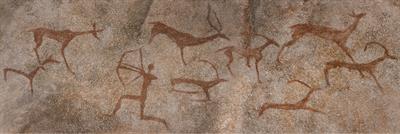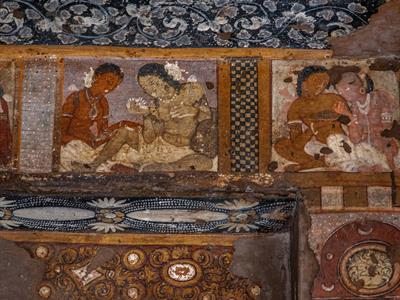
PUMPA - SMART LEARNING
எங்கள் ஆசிரியர்களுடன் 1-ஆன்-1 ஆலோசனை நேரத்தைப் பெறுங்கள். டாப்பர் ஆவதற்கு நாங்கள் பயிற்சி அளிப்போம்
Book Free DemoHuman-made proof affixed to natural stone is known as rock art. Many global phenomena of rock art could be seen in many culturally diverse regions of the world. It has been created in various ways throughout human history, though many ethnographically recorded rock art forms are created as part of the ritual.

India is one of the world's oldest and most diverse rock art collections. This work of art has been discovered all over the United States. By far, the most painted rock shelters can be found in Central India. Artwork can be seen on rock shelters walls and ceilings in the country's southern, western, and eastern regions.
Large wild animals like bison, goats, aurochs, and deer and tracings of human hands and abstract patterns called finger flutings are the most common subjects in cave paintings.

Ajanta Painting near Aurangabad, Maharashtra
The tradition of rock art in India dates back to about 30,000 BCE, most notably in Central India's caves. The Bhimbetka rock shelters elaborate frescoes at sites like Ajanta and Ellora, famous for their rock-cut artificial caves, and continue until the 8th to 10th century CE.